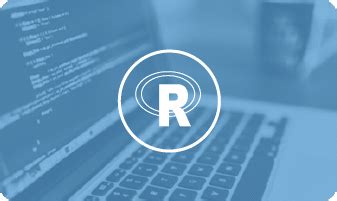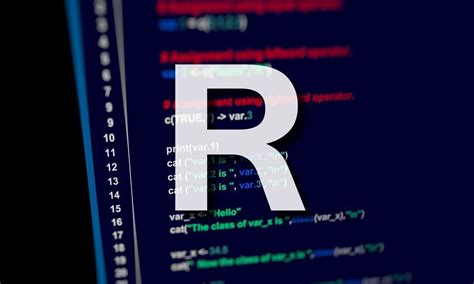R programming has become a powerful tool for financial analysis, enabling professionals to handle large datasets, perform statistical modeling, and develop predictive algorithms. As the demand for data-driven decision-making grows, choosing the right R programming software is essential to streamline analysis and enhance productivity. In this article, we explore the top 10 R programming software options specifically designed for financial analysis. We’ll review their features, benefits, pricing, and user experiences to help you make an informed choice. Whether you’re a financial analyst or data scientist, these tools offer the functionality and flexibility needed to tackle complex financial tasks efficiently and securely.
Delve into this topic with zokablog.com to gain a thorough understanding.
1. Overview of R Programming for Financial Analysis
R programming has emerged as a highly valuable tool in financial analysis due to its powerful capabilities in handling complex data, performing advanced statistical computations, and creating visualizations. As financial markets become increasingly data-driven, analysts need tools that can manage large datasets, automate processes, and perform predictive modeling. R’s open-source nature and extensive package ecosystem make it ideal for financial professionals looking to implement custom solutions tailored to their specific needs.
R’s applications in finance range from portfolio optimization and risk management to time series analysis and forecasting. It offers a wide variety of packages specifically designed for financial tasks, such as quantmod for quantitative modeling, PerformanceAnalytics for performance and risk metrics, and TTR for technical trading rules. Furthermore, R’s robust statistical computing features enable financial analysts to perform accurate and efficient data analysis, improving decision-making and investment strategies.
The flexibility of R also allows seamless integration with other programming languages, databases, and financial platforms, making it an essential tool for those looking to develop comprehensive financial solutions. Its growing popularity in finance, coupled with strong community support, continues to position R as a leading programming language for financial analysis.

2. Criteria for Selecting R Programming Software
When selecting R programming software for financial analysis, several key factors should be considered to ensure efficiency and accuracy. First, ease of use is essential, especially for professionals who may not have extensive coding experience. A user-friendly interface, comprehensive documentation, and tutorials can significantly enhance usability.
Next, the software should support a wide range of R packages, particularly those designed for financial applications, such as time series analysis, risk management, and portfolio optimization. Flexibility in handling large datasets and advanced statistical functions is also important for performing complex analyses.
Compatibility with existing financial systems, databases, and other programming languages should be evaluated to ensure seamless integration into current workflows. Additionally, the software’s scalability is crucial for growing datasets and evolving business needs.
Pricing and licensing options, including open-source versus commercial versions, are other factors to weigh based on budget and requirements. Finally, consider community support and regular updates, as these ensure continuous improvements and solutions for emerging financial challenges.

3. Detailed Review of the Top 10 R Programming Software
In this section, we’ll explore the top 10 R programming software options for financial analysis, providing a detailed review of their features and benefits.
RStudio: A popular IDE for R, RStudio offers a user-friendly interface with extensive tools for data visualization, code editing, and package management.
Jupyter Notebooks: Known for its interactive coding environment, Jupyter supports R and is ideal for creating sharable financial reports.
Rattle: A graphical data mining interface built for R, Rattle simplifies complex data analysis tasks without requiring deep programming knowledge.
Radiant: A business analytics tool that provides a seamless R integration for financial modeling and decision analysis.
RKWard: An easy-to-use R GUI focused on making R more accessible for beginners while supporting advanced statistical analysis.
ESS (Emacs Speaks Statistics): A powerful tool for experienced R users, offering integration with Emacs for enhanced code editing and statistical computing.
Tinn-R: A lightweight code editor tailored for R, offering fast and efficient coding.
R Commander: A GUI for R that simplifies the process of performing statistical analyses.
BlueSky Statistics: A user-friendly GUI designed for data analysts with built-in support for R.
Shiny: A web application framework that enables the creation of interactive financial dashboards using R.

4. Key Features and Benefits of Each Software
Each R programming software offers distinct features and benefits, making them valuable for financial analysis:
RStudio: Provides a comprehensive and user-friendly environment with powerful tools for data visualization, debugging, and package management, enhancing productivity and ease of use for analysts.
Jupyter Notebooks: Supports interactive coding with markdown cells for documentation, making it ideal for financial analysts who need to share and present results in an organized, clear format.
Rattle: A graphical user interface simplifies complex data mining processes, allowing analysts to perform financial analysis without extensive coding skills.
Radiant: Focused on business analytics, Radiant offers a streamlined experience for financial modeling and decision-making, providing an intuitive interface with strong integration of R functionalities.
RKWard: Tailored for beginners, RKWard provides accessibility while supporting advanced statistical analysis, combining ease of use with depth of functionality.
ESS (Emacs Speaks Statistics): Perfect for experienced R users, ESS integrates with Emacs, offering robust tools for statistical computing and efficient code editing.
Tinn-R: A lightweight code editor that is fast and efficient, Tinn-R is great for quick coding tasks and easy integration with R.
R Commander: Simplifies statistical analysis through its GUI, reducing the need for command-line coding, ideal for users new to R.
BlueSky Statistics: Designed for ease of use, it includes built-in support for R, helping financial analysts quickly run analyses.
Shiny: Enables the creation of interactive web applications and dashboards, making it a powerful tool for displaying financial data dynamically.
5. Comparison of Pricing and Licensing Options
When comparing pricing and licensing options for R programming software, it’s essential to consider both cost and functionality.
RStudio: Offers a free open-source version with basic features, while the Professional version, starting at approximately $995 per user annually, includes advanced tools and support.
Jupyter Notebooks: Free and open-source, Jupyter is a cost-effective choice for interactive coding, with no licensing fees.
Rattle: Available as a free open-source tool, making it accessible for users who need a graphical interface for data mining.
Radiant: Provides a free version with limited features; the full version requires a paid license, which varies based on user needs and organization size.
RKWard: Free and open-source, offering an accessible entry point for users seeking a GUI for R.
ESS (Emacs Speaks Statistics): Free and open-source, integrating with Emacs for no additional cost.
Tinn-R: A free code editor tailored for R, with no associated licensing fees.
R Commander: Free and open-source, suitable for users looking for a GUI-based statistical tool.
BlueSky Statistics: Requires a paid license, with pricing typically based on individual or organizational use.
Shiny: Offers a free open-source framework; however, commercial licenses for advanced features and support start around $10,000 per year.
Overall, many tools provide free options, while others offer premium features at varying costs, allowing users to choose based on their specific needs and budget.
6. User Experiences and Case Studies
User experiences and case studies highlight the practical benefits of various R programming software for financial analysis. For instance, RStudio users praise its comprehensive interface and robust support, making complex data tasks more manageable. Financial analysts using Jupyter Notebooks appreciate its interactive features and seamless integration with data visualization tools, which enhance their ability to present findings.
Rattle’s intuitive GUI has been lauded for simplifying data mining processes, allowing users with minimal coding experience to perform advanced analyses. Radiant users report its effectiveness in business analytics, with positive feedback on its ease of use for financial modeling.
RKWard and R Commander are often chosen for their user-friendly GUIs, making them popular among beginners. Shiny’s ability to create interactive dashboards has received high marks from analysts who value dynamic data presentation. These real-world applications demonstrate how each software can address specific financial analysis needs and
7. Future Trends in R Programming for Financial Analysis
The future of R programming in financial analysis is poised for significant advancements as technology evolves. One major trend is the increasing integration of R with artificial intelligence and machine learning, allowing for more sophisticated predictive modeling and automated decision-making. Enhanced capabilities in data visualization and interactive dashboards will also play a critical role, enabling analysts to present financial data more intuitively and dynamically.
Another trend is the expansion of cloud-based R platforms, which offer scalable resources and improved collaboration tools for distributed teams. These platforms facilitate easier access to large datasets and computational power, making complex analyses more feasible.
Additionally, advancements in integration with other programming languages and financial software will streamline workflows, enabling seamless data transfer and enhanced functionality. The growing focus on cybersecurity will ensure that R programming tools incorporate robust measures to protect sensitive financial information. As these trends develop, R programming will continue to be a powerful asset for financial analysts, driving innovation and efficiency in data analysis.
In conclusion, selecting the right R programming software is crucial for effective financial analysis. With a range of options available, each offering unique features and benefits, analysts can enhance their ability to manage data, perform advanced computations, and present insights. By considering criteria such as ease of use, integration capabilities, and pricing, professionals can choose the best tool to meet their needs. As technology continues to advance, staying informed about future trends will ensure that financial analysts remain at the forefront of data-driven decision-making.
zokablog.com